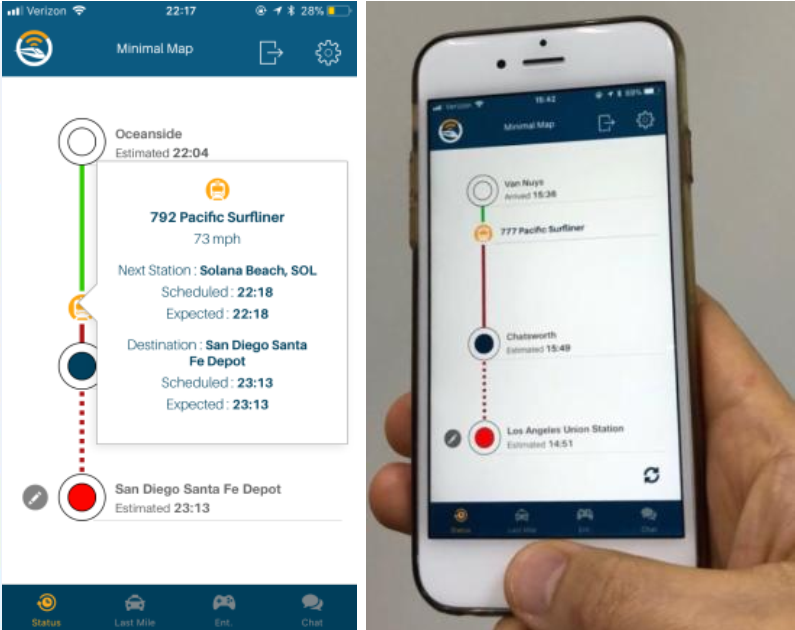TrainAid is a smart onboard railroad passenger information and entertainment system, which provides customizable real-time train status and value-added travel information and entertainment services through a smartphone application. TrainAid has a server to interface with various real-time data sources, including the existing OPIS, GPS data from connected smartphones, train control centers, and train dispatchers. The end users, which are mainly onboard passengers but can also be planning and boarding users, receive the TrainAid services through a smartphone application. The smartphone application will not only provide audio, visual, and vibrotactile alerts to ensure ADA compliance, but also have the potential to include more value-added information and services to enhance convenience and safety for the passengers on board. The enhanced services include but are not limited to: (1) customized traveler information and alerts based on destination; (2) a two-way communication platform between the passengers and the train conductors/operators; (3) display of routes and station information; (4) access to multimodal transit services; (5) location-based weather reports; and (6) entertainment options.

The biggest advantage of this system is the smartphone-based application as everyone has a smartphone in their pocket and many people are frequent users. It’s convenient for people to yield the benefits of the system as they can get the travel information via personalized push notifications, alerts and can communicate to the conductor/operator in case of emergency.

The application is ADA (Americans with Disabilities Act) compliant and has been developed keeping in mind the people with disabilities as the information can be delivered via audio, visual and vibrotactile alerts. Also, it is helpful for people with language barriers as it supports multiple languages. The customizable alerts can help sleepy passengers to wake up on time before they miss the station.

The system is designed to import transit data in General Transit Feed Specification (GTFS) format and can be easily deployed across various transit agencies. This makes the system an ideal universal platform to establish communication between various transit agencies and riders that use multiple transit agencies while commuting.
The user can access real-time train status both while riding the train and waiting for it on the platform. The user can also access train occupancy information in order to make informed decisions according to personal comfort level. Since all the riders may not be able to read/hear the onboard announcements due to congestion or noise, the app delivers announcements as push notifications in real-time as well.


The application allows passengers to have an enhanced riding experience by providing all the travel information on their smartphone screens along with value added services such as information on local attractions, local weather, general information, etc. The user has the ability to customize the app by choosing between different map styles, set up personalized alerts, access chatrooms, etc.
This system provides an opportunity to deal with the first-mile and the last-mile problem as it offers better connectivity to rapid transit, transit bus, Transportation Network Companies (Uber, Lyft, etc.), and ridesharing/bike-sharing programs. The user can access various options to reach the train station from the point of origin and reach the final destination from the train station. The app will make multi-agency transfers easier and convenient and will allow users to explore alternatives in case they miss the train from one agency or the wait time is too long. The app will provide schedules and prices for a combination of transit service providers that can help reduce travel time and delay. The users can also find partners to share Uber/Lyft and save some extra money.


The app can make people more connected to the system and can make transit riding experience much better and efficient. A reduction in travel time and delay that usually occurs due to lack of communication between the transit system and the users can be addressed and this may lead to increased ridership on the transit. This can further ease the traffic on freeways and lead to a reduction in delay and air pollution.
The application allows transit users to communicate with the train conductor and operator which make them more informed in case of an unusual or emergency stop. The reason behind any unusual stop can be conveyed immediately to the users which make them feel safer and prevent the situations of anxiety and discomfort. Also, people can inform conductor/operator directly about any unusual sound or activity that might be associated with technical or security issues. The app may also be helpful to conduct a planned evacuation in case of emergency or incident by alerting people in groups rather than all at the same time.
